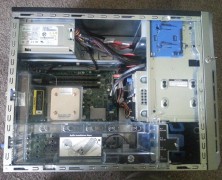Computers are the most awful way to do things, except for all the other ways we’ve tried. It’s easy to blame computers; they don’t fight back. What’s much more difficult, yet distressingly important, is figuring out why computers have done something unappreciated and remedying the situation. One important tool in a systems administrator’s arsenal is Solarwinds’ Virtualization Manager. Humans have a natural tendency to anthropomorphize inanimate objects. Many of us give our cars names, ascribe to them personalities, talk to them and sometimes treat them like members of the family. We similarly ascribe personalities and motivations to individual computers or even entire networks of them, often despite being perfectly aware of the irrationality of this. We can’t help it: anthropomorphizing is part of being human. Computers, however, aren’t human. They don’t have motives and they don’t act without input. They do exactly they are told, and that’s usually the problem. The people telling the computers what to do – be they end users or systems administrators – are fallible. The weakest link is always that which exists between keyboard and chair. Our likelihood of making an error increases the more stress we’re put under. Whether due to unreasonable demand, impossible deadlines, or networks which have simply grown too large to keep all the moving parts in our memory at given time, we fallible humans need the right tools to do the job well. You wouldn’t ask a builder to build you a home using slivers of metal and a rock to hammer them. So why is it that we so frequently expect systems administrators to maintain increasingly complex networks with the digital equivalent of two rocks to bash together? It’s a terrible prejudice that leads many organizations to digital ruin. A tragedy that, in...
HP ML310e Review
posted by Stuart Burns
Being a VMware guy, I needed a VMware cluster to train and learn on. The old cluster of a DL385 and a NL40 wasn’t really cutting it and was LOUD. Therefore, I decided it was time to upgrade. I was interested to play with the concept of nested VM’s and build a virtual cluster inside my HP ML310e. So in essence, what’s it like? It’s sexy, very quiet and power efficient (as denoted by the e, whereas p means performance, in terms of more powerful CPUs, etc.) The model I have is the base model, Xeon E3-1220-V2 with a single SATA 7,200 RPM disk and maxed out to 32 GB RAM. This is fine as it is just a test lab. It would also make an excellent small office server as well if an additional disk where added. The standard 2 GB of RAM is a bit miserable but you do have another 3 slots for your RAM unless like me you’re a VMware nerd who crams in as much RAM as possible. The hardware is ideal for a nested cluster. The Xeon E3-1220-V2 has both VT-D and EPT (Hardware look aside buffer in other words) onboard. This means it has all it needs to deal with nested VM’s in hardware rather than software, so the performance is still excellent. So, let’s start with the cosmetics and the outsides. The G8 has a face lift and sports a cool metallic grill. One of the things I didn’t like about it was the fact that to actually get into the box you now have to use a key on the side of the unit. That in itself is not so bad, but you once you have the lock in the unlock position you can’t remove the key,...


